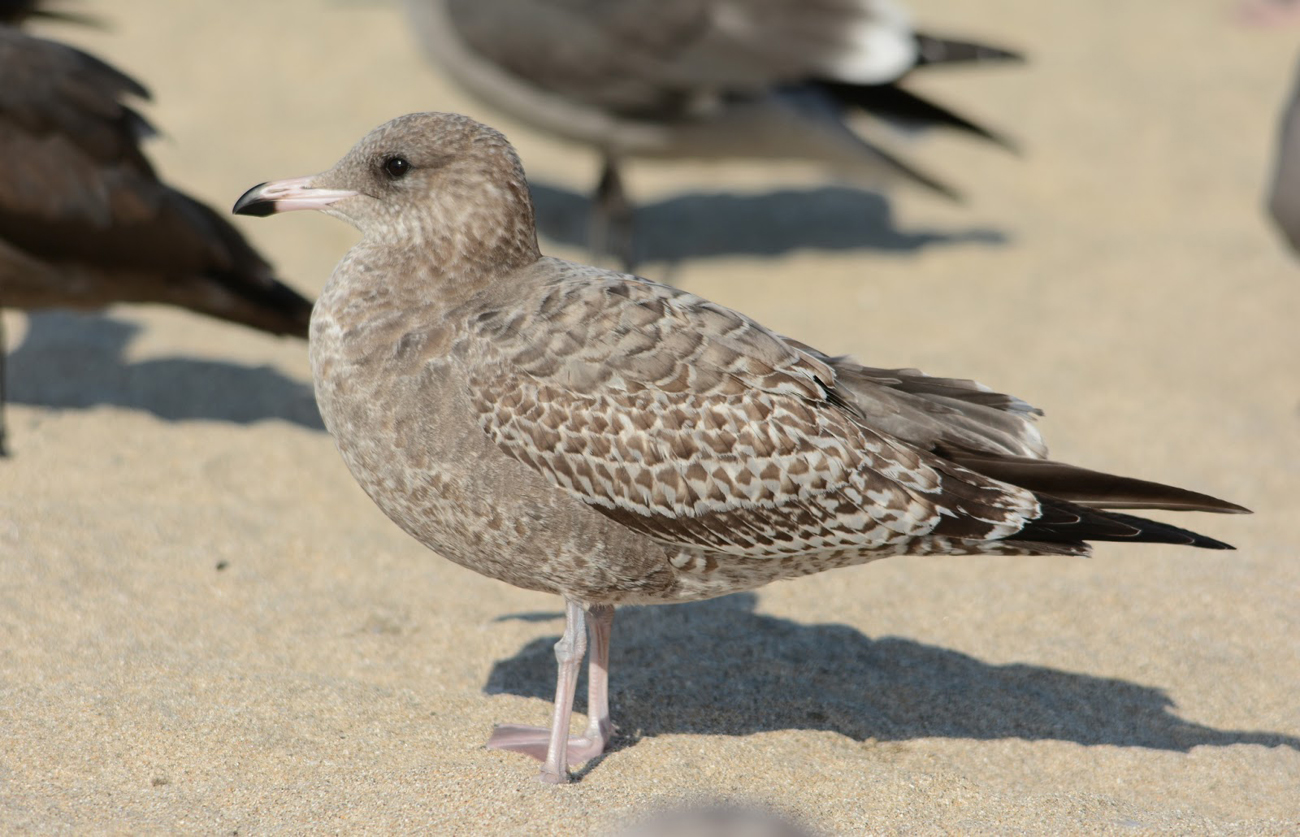
Although there is some variation in their plumage aspects and upperpart patterns, 1st cycle California Gulls can usually be pegged down by their darker inner primaries, bicolored bill and relatively small and slender body size (when compared to other large white-headed gulls).
A typical hatch-year individual with bicolored bill, relatively long wing extension and moderate post-juvenile scapular molt.
San Mateo County, CA. 12 September 2014.
But what about their uppertail pattern? Tail patterns often reveal helpful clues when identifying large 1st cycle gulls. This post was spurred by a hatch year California Gull photographed by Paul Hurtado outside of Reno earlier this month.
Let's first look at tailband patterns that we can expect to see on the majority of young California Gulls.
Typical Tail Patterns
Ordinarily, a rather dark tailband is visible with little barring, recalling American Herring Gull. White tips are usually present when the feathers are fresh before soon being diminished by wear. The uppertail coverts show lancelot patterning with barring up the center of the tail. The uppertail coverts will often have a noticeable bright white ground color that contrasts sharply with the flight feathers.
 |
| San Mateo County, CA. September. |
 |
| Berrien County, MI. October. |
 |
| Grays Harbor County, WA. August. Courtesy Nick Dean |
Atypical Tail Patterns
Consider this bird posted by Paul Hurtado on North American Gulls:
 |
| Washoe County, Nevada. August. Courtesy Paul Hurtrado. |
At first glance, the thin tailband and contrasting white uppertail coverts look like something we'd find on a Lesser Black-backed Gull.
 |
| Same individual above. |
What makes the Nevada bird a little more challenging to identify is that it has yet to take on the classic bicolored bill pattern, but I think we could agree that the sum of its other parts suggest California Gull, as does the time and location.
The exceedingly white ground color to the uppertail coverts, with perhaps some bright lighting and premature wear at play, could be found in some birds.
 |
| Oregon. August. Copyright Greg Gillson. |
Note the white tips to the rectrices and paling white forehead on this Oregon bird. Also found in many hatch year California Gulls is the propensity for the lesser & median coverts to have pale edges and centers that far outdo the darker pigments. The wing coverts take on a frosted appearance here. The uppertail coverts are largely white.
 |
| Reeves County, Texas. December. Courtesy Adam Wood. |
It was difficult for me to find an example of a California Gull with a tailband similar to Paul's, but this individual from Texas comes close.
Note the frosty median coverts found in some birds. The thin tailband appearance is exacerbated here by the rectrices being completely spread. Overall, however, this isn't a typical tailband pattern on 1st cycle California Gull.
 |
| Same individual above. |
Most, if not all, large gull species will now and then present a plumage oddity that doesn't conform to what we're accustomed to seeing. First cycle California Gulls are fairly distinctive in their range and with a little practice, they seldom present identification problems. Documenting the exceptions to the rule not only improve field identification skills for future use, but also helps reinforce limits for what is typical and what is not.







